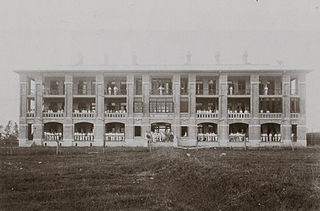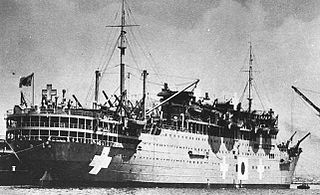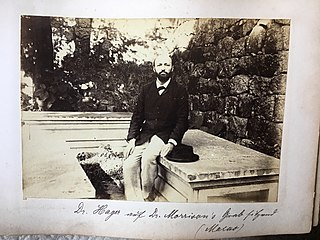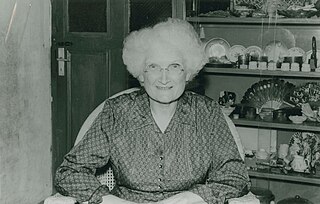Biography
Under the Japanese occupation
From July 1937 to October 1938 he lived under Japanese bombing raids on Canton. His wife and family stayed on in Hong Kong after 1937 summer holidays there but left for Australia in July 1938.
From October 1938 to July 1939 he helped to run refugee camps for Chinese people during Japanese attack upon and occupation of Canton. In July 1939 he rejoined family for leave in Australia until November 1940. In December 1940 he returned to Canton (now Guangzhou) under the Japanese, the family remaining in Melbourne Australia.
From December 1941 to August 1942, after the Japanese attack on Pearl Harbor and on Hong Kong (see Battle of Hong Kong) and Malaya (see Battle of Malaya), he continued to live in the London Missionary Society house in Canton, but under house arrest by the Japanese army.
Repatriation to Australia
In May 1942 he was taken with other British and American citizens to Shanghai for repatriation and exchange with Japanese from the United States and the British Empire.
On 4 August he sailed from Shanghai in the hell ship Tatsuta Maru with 800 passengers. He arrived at Lourenço Marques in Portuguese East Africa on 27 August where exchange took place. Then to Durban, South Africa for six weeks waiting a ship to Australia. He left on S.S. "Nestor" on 28 October and arrived in Melbourne 16 November 1942.
(* Recorded as Tatuta Maru in some texts.)
Postwar return to China
In 1946 he returned alone to Hong Kong to help in rehabilitation there after 3½ years of Japanese occupation. He was joined by family in August 1946.
In 1947 he returned with the family to Canton (now Guangzhou), again for two years with the Chinese Church during the Chinese Civil War. Sons John Bunton & Frank Bunton returned to school (Scotch College) in Melbourne late 1948/early 1949 respectively. The rest of his family stayed on in Hong Kong after 1949 summer holiday there while Hedley went back to await the communist revolution. So he lived under the People's Republic of China from October 1949 to May 1950, when left for Hong Kong and leave in Australia.
During 1950 and 1951 he reported to Australian and New Zealand Churches on the Chinese situation.
Retirement in Sydney Australia
In 1973 he returned to Australia to live in church retirement village in Pymble, Sydney.
From 1974 to 1976 he was secretary for Australia and New Zealand of the Council for World Mission (successor to the London Missionary Society). From 1976 to 1997 he continued to live in retirement until death in 1997.

Lingnan University in Guangzhou (Canton), China, was a private university established by a group of American missionaries in 1888. At its founding it was named Canton Christian College (格致書院).

Robert Morrison, FRS, was an Anglo-Scottish Protestant missionary to Portuguese Macao, Qing-era Guangdong, and Dutch Malacca, who was also a pioneering sinologist, lexicographer, and translator considered the "Father of Anglo-Chinese Literature".

The Cantonese people or Yue people, are a Yue-speaking Han Chinese sub-group originating from or residing in the provinces of Guangdong and Guangxi, in Southern Mainland China. Although more accurately, "Cantonese" refers only to the people from Guangzhou and its satellite cities and towns and/or native speakers of Standard Cantonese, rather than simply and generally referring to the people of the Liangguang region.
The Right Reverend Bishop (Nelson) Victor Halward was an English Anglican bishop in Hong Kong and British Columbia. He was the Colony Commissioner of the Boy Scout Association, Hong Kong Branch from 1934 to 1950.

John Robert Morrison was a British interpreter and colonial official in China. Born in Macau, his father was Robert Morrison, the first Protestant missionary in China. After his father's death in 1834, Morrison replaced him as Chinese Secretary and Interpreter to the Superintendents of British Trade in China. In 1843, he was appointed as Acting Colonial Secretary of Hong Kong and a member of the Executive and Legislative Councils, but died eight days later in Hong Kong from fever.

Hong Kong and Whampoa Dock was a Hong Kong dockyard, once among the largest in Asia.

The Battle of Borneo was a successful campaign by Japanese Imperial forces for control of Borneo island and concentrated mainly on the subjugation of the Raj of Sarawak, Brunei, North Borneo, and the western part of Kalimantan that was part of the Dutch East Indies. The Japanese main unit for this mission was the 35th Infantry Brigade led by Major-General Kiyotake Kawaguchi.

MS Aramis was built for France's Messageries Maritimes for the France-Southeast Asia colonial route. One of her distinguishing features was that her funnels were square-shaped. She was built to carry 1,045 civilian passengers in first, second, third, and steerage class. She was converted to an armed merchant cruiser when France entered World War II, until demilitarized following the Second Armistice at Compiègne on 22 June 1940. Aramis was seized by Japan in 1942, renamed Teia Maru (帝亜丸), and served as a repatriation ship in 1943. She served as a transport between Singapore and Japan in 1944 until sunk in the battle for convoy Hi-71 while assigned to the defense of the Philippines.
A hong originally designates both a type of building and a type of Chinese merchant intermediary in Guangzhou, Guangdong, China, in the 18-19th century, specifically during the Canton System period.

Stanley Internment Camp was a civilian internment camp in Hong Kong during the Second World War. Located in Stanley, on the southern end of Hong Kong Island, it was used by the Japanese imperial forces to hold non-Chinese enemy nationals after their victory in the Battle of Hong Kong, a battle in the Pacific campaign of the Second World War. About 2,800 men, women, and children were held at the non-segregated camp for 44 months from early January 1942 to August 1945 when Japanese forces surrendered. The camp area consisted of St Stephen's College and the grounds of Stanley Prison, excluding the prison itself.

Benjamin Hobson (1816–1873) (Chinese:合信) was a Protestant medical missionary who served with the London Missionary Society in imperial China during its Qing dynasty. His Treatise on Physiology, reproducing and elaborating on work by William Cheselden, helped revolutionize Chinese and later Japanese medical understanding and treatment.
Wat Ngong (1785–1867), also known by various other names, was a Chinese Protestant convert, evangelist, and writer from Guangzhou during the Qing dynasty. He was an early lithographer in Malacca, Macao, Guangzhou, and Hong Kong, possibly the first Chinese to master the craft.
Sir Lindsay Tasman Ride was an Australian physiologist, soldier, and vice chancellor of the University of Hong Kong.

Ronald Owen Hall was an Anglican missionary bishop in Hong Kong and China in the mid 20th century. As an emergency measure during the Second World War, with China under Japanese occupation, he ordained Li Tim-Oi as the first woman priest in the Anglican Communion.

Sir Frederick William Maze was a British civil servant and Chinese customs commissioner, serving as Inspector-General of the Chinese Maritime Customs Service from 1929 to 1943.

Kuroshio Maru was a tanker that was built in 1938 for Japanese owners. She was chartered by the Imperial Japanese Navy and Imperial Japanese Army during World War II: the ship was sunk in January 1945 at Takao, Formosa by American aircraft. Salvaged in 1946, she was allocated as a war prize to China and renamed Yung Hao, but was forced to remain at Hong Kong by the British. She was requisitioned by the Admiralty during the Korean War and allocated to the Royal Fleet Auxiliary. She was to have been named RFA Surf Pilot but due to her poor condition she did not serve in the Royal Fleet Auxiliary. She served as Surf Pilot, a tender to HMS Terror until 1958 and was subsequently scuttled off Pulau Aur, Malaya in 1960.

Rev. Dr. Charles Robert Hager was a Swiss-born American missionary sent to Hong Kong and China by the American Board of Commissioners for Foreign Missions (ABCFM) to start the Hong Kong Mission in 1883. He was best known as the baptizer of Dr. Sun Yat-sen, the first president and founding father of the Republic of China. Rev. Hager was the founder, and was regarded as the first Minister-in-charge, of the China Congregational Church in Hong Kong.
The Church Missionary Society in China was a branch organisation established by the Church Missionary Society (CMS), which was founded in Britain in 1799 under the name the Society for Missions to Africa and the East; as a mission society working with the Anglican Communion, Protestant, and Orthodox Christians around the world. In 1812, the organization was renamed the Church Missionary Society. The missions were financed by the CMS with the local organisation of a mission usually being under the oversight of the Bishop of the Anglican diocese in which the CMS mission operated.

Elizabeth Bernard was an American missionary for the Churches of Christ, known for her missionary work with blind children in Asia.
David M. Paton (1913-1992) is an Anglican missionary to China, working under the Church Missionary Society.















